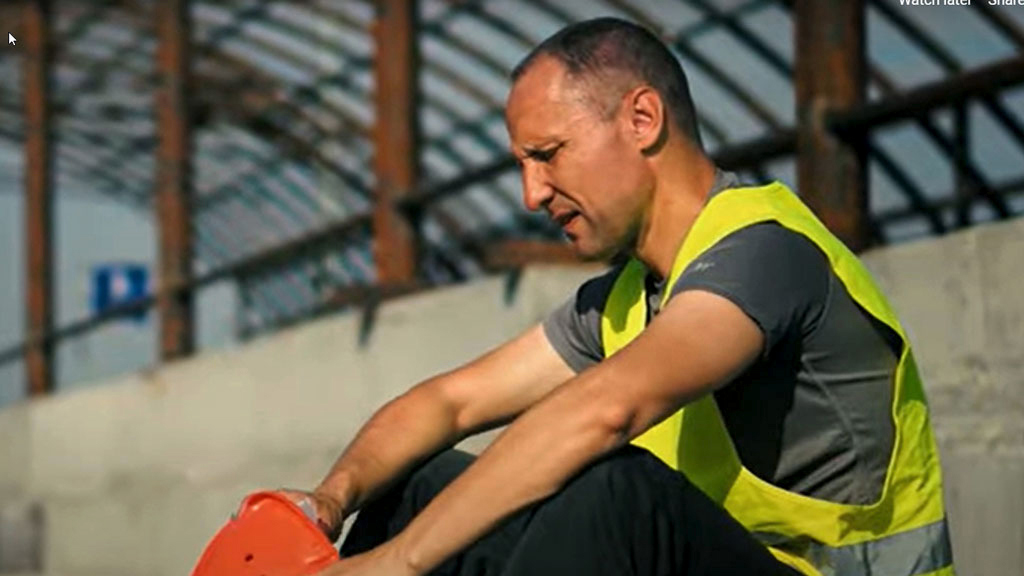A 28-year-old construction worker dies from a drug overdose over the May long weekend.
His tragic passing is sadly one more example of a growing crisis, as overdose deaths continue to climb dramatically in Ontario with recent studies showing it is impacting the construction workforce more than any other sector of the economy.
It is one of the main reasons why the Ontario Construction Consortium (OCC) launched The Other Pandemic campaign this past week to shine a light on the severity of the issue.
“We’ve got to do everything we can to get this message out, because I actually think this could help save some lives,” OCC executive director Phil Gillies told the Daily Commercial News.
A report by the Ontario Drug Policy Research Network, the office of the Chief Coroner for Ontario and Public Health Ontario released recently found 2,500 Ontarians died of drug overdoses in 2020, up from 1,500 in 2019, which is an increase of 60 per cent. Of the victims who were employed, 30 per cent were construction workers which is by far the most impacted industry. The report indicates at least 57 construction workers died of overdoses in Ontario last year.
Industry stakeholders show support
The Other Pandemic campaign is supported by the Interior Systems Contractors Association, the Carpenters District Council of Ontario (CDCO) and the International Union of Painters and Allied Trades. Other associations in the industry have also shown support, Gillies said.
At a meeting with the international president of the Carpenters’ Union in the U.S. in February Gillies learned the opioid crisis was impacting the construction workforce south of the border as well.
“What I was thinking is that the situation was no different in Canada,” said Gillies. “It all crystallized last week when the first big report this side of the border came out.
“It confirmed what we believed to be the case.”
The OCC has done its own research and said there are many reasons for this. One is that construction workers with musculoskeletal disorders are more likely to use prescriptions for pain management.
“Construction can be very physical, heavy work and workers do get injured and go to their doctor who more often than not prescribe painkillers for their injury,” Gillies explained. “The workers get on the painkillers and some of them inevitably are going to become addicted.
“Sooner or later the prescriptions are cut off and that’s when they may go to the street to buy something to dull the pain. What is on the street is this deadly drug fentanyl.”
Campaign goals
One of the goals of the campaign is to raise awareness of this issue among the construction workforce through advertorials in national newspapers, several public service announcements, videos and a radio commercial. There is also a website TheOtherPandemic.ca.
“The reason we think this is necessary is research has been done that indicates that there was a much higher public awareness and a much higher public concern about the opioid crisis before COVID than there is now,” said Gillies.
They also hope to get some advice to people who may be struggling with this problem
“The most dangerous thing an addict can do is to use alone,” Gillies noted. “If they use this drug and it’s laced with fentanyl they can go into overdose and there is nobody there to help them. We’re saying if you are using these drugs go to a supervised injection site and use under supervision. If you can’t or won’t do that, use the drug in the company of another trusted individual with a Naloxone kit in the room.”
While this conflicts with the advice from public health officials during the pandemic to stay home and isolate, the option of using alone carries with it severe risks.
“For a hard drug user that’s very bad advice,” said Gillies. “Another part of our messaging to construction workers, particularly those that are using drugs, is go and get your COVID vaccination because if you are going to be using drugs with somebody else everyone is that much safer.”
The campaign also urges governments to increase addiction treatment and counselling services.
“We all know that the pandemic has led to increased mental health and addiction problems…but the resources aren’t that much greater,” Gillies said. “We hear all too often that people who are worried about their drug use and do reach out for help are finding that the services are somewhat limited.”
He added, “if you are using hard drugs right now and you can possibly seek help and try to stop there is no better time to do that than now.”
Other recommendations are that contractors and unions need to step up training and education regarding drug use and its possible consequences and the government should look at the safe supply issue when it comes to drugs.
Mike Yorke, president of the CDCO, said there is an obligation to address the crisis.
“We have a responsibility to the industry,” said Yorke. “When there is a crisis you have to step up and you have to show that leadership on behalf of the next generation of young men and women who are coming into the industry.
“We have to ensure that there is health and safety in the industry and that goes beyond the jobsite. It’s got to be all encompassing.”
Follow the author on Twitter @DCN_Angela.











Recent Comments
comments for this post are closed